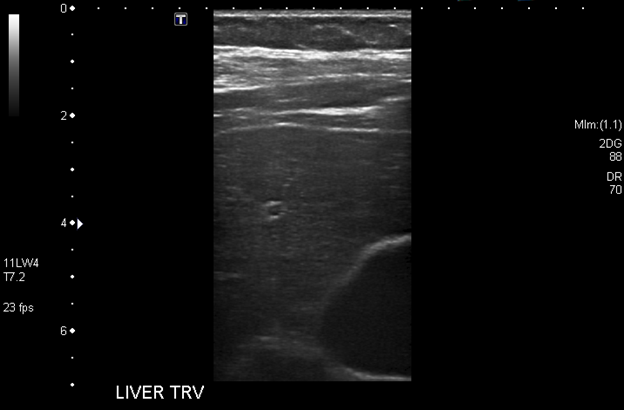Sunday Poster Session
Category: Pediatrics
P1895 - Bardet-Biedl Syndrome Unveiled by Congenital Hepatic Fibrosis and Ulcerative Colitis
Sunday, October 26, 2025
3:30 PM - 7:00 PM PDT
Location: Exhibit Hall
- SQ
Stephanie Quon, BASc (she/her/hers)
University of British Columbia
Vancouver, BC, Canada
Presenting Author(s)
Bachviet AH. Nguyen, MD1, Stephanie Quon, BASc2, Astrid-Jane Williams, MD3
1University of British Columbia Department of Medicine, Surrey, BC, Canada; 2University of British Columbia, Vancouver, BC, Canada; 3UBC Department of Medicine/IBD Centre of BC, Vancouver, BC, Canada
Introduction: Bardet-Biedl syndrome (BBS) is a rare autosomal recessive multisystem disorder diagnosed in early childhood. Major diagnostic criteria of BBS include rod cone dystrophy, obesity, postaxial polydactyly, renal disease, cognitive impairment, and hypogonadism. Gastrointestinal manifestations are minor features and include inflammatory bowel disease (IBD) and liver disease.
We present a case of BBS that was notable for severe congenital hepatic fibrosis and ulcerative colitis, a rare comorbid association.
Case Description/
Methods: A 12 year old female with a history of retinitis pigmentosa, polydactyly and a previous cleft lip repair presented with asymptomatic pancytopenia, eGFR 26, ALP 210 U/L, and a creatinine of 220 µmol/L. She had an unremarkable urinalysis, bone marrow biopsy, CRP, and rheumatologic work-up. On exam, there was mild caput medusae, central obesity, and splenomegaly. Ultrasound demonstrated echogenic normal-sized kidneys. A diffusely heterogenous liver with irregular contour and abnormal periportal echogenicity were incidentally found. Transient elastography revealed a mean score of 17.6 kPA suggesting advanced hepatic fibrosis and portal hypertension. Two months later, she re-presented with self-resolving abdominal pain, hematochezia and poor oral intake but bidirectional endoscopy was later unremarkable.
Genetic testing confirmed the diagnosis of BBS. A screening upper endoscopy was negative for varices and the patient continued to exhibit stable liver function. 5 years later, the patient re-presented with abdominal pain and hematochezia secondary to ulcerative colitis on colonoscopy; her symptoms resolved completely using oral mesalamine.
Discussion: Gastrointestinal disease is not a prominently discussed feature of BBS in the literature. Our case highlights the importance of screening for hepatic fibrosis in patients with BBS as well as esophageal varices if appropriate. There should be a high degree of suspicion for inflammatory bowel disease in children with BBS who experience hematochezia, although the diagnosis of IBD may not be immediately apparent on colonoscopy. Regular follow-up of patients with BBS is required as a result.

Figure: Figure 1: Transverse view of a transabdominal ultrasound showing the liver which is diffusely coarse in echotexture and irregular in contour. No focal hepatic lesion is present.
Disclosures:
Bachviet Nguyen indicated no relevant financial relationships.
Stephanie Quon indicated no relevant financial relationships.
Astrid-Jane Williams indicated no relevant financial relationships.
Bachviet AH. Nguyen, MD1, Stephanie Quon, BASc2, Astrid-Jane Williams, MD3. P1895 - Bardet-Biedl Syndrome Unveiled by Congenital Hepatic Fibrosis and Ulcerative Colitis, ACG 2025 Annual Scientific Meeting Abstracts. Phoenix, AZ: American College of Gastroenterology.
1University of British Columbia Department of Medicine, Surrey, BC, Canada; 2University of British Columbia, Vancouver, BC, Canada; 3UBC Department of Medicine/IBD Centre of BC, Vancouver, BC, Canada
Introduction: Bardet-Biedl syndrome (BBS) is a rare autosomal recessive multisystem disorder diagnosed in early childhood. Major diagnostic criteria of BBS include rod cone dystrophy, obesity, postaxial polydactyly, renal disease, cognitive impairment, and hypogonadism. Gastrointestinal manifestations are minor features and include inflammatory bowel disease (IBD) and liver disease.
We present a case of BBS that was notable for severe congenital hepatic fibrosis and ulcerative colitis, a rare comorbid association.
Case Description/
Methods: A 12 year old female with a history of retinitis pigmentosa, polydactyly and a previous cleft lip repair presented with asymptomatic pancytopenia, eGFR 26, ALP 210 U/L, and a creatinine of 220 µmol/L. She had an unremarkable urinalysis, bone marrow biopsy, CRP, and rheumatologic work-up. On exam, there was mild caput medusae, central obesity, and splenomegaly. Ultrasound demonstrated echogenic normal-sized kidneys. A diffusely heterogenous liver with irregular contour and abnormal periportal echogenicity were incidentally found. Transient elastography revealed a mean score of 17.6 kPA suggesting advanced hepatic fibrosis and portal hypertension. Two months later, she re-presented with self-resolving abdominal pain, hematochezia and poor oral intake but bidirectional endoscopy was later unremarkable.
Genetic testing confirmed the diagnosis of BBS. A screening upper endoscopy was negative for varices and the patient continued to exhibit stable liver function. 5 years later, the patient re-presented with abdominal pain and hematochezia secondary to ulcerative colitis on colonoscopy; her symptoms resolved completely using oral mesalamine.
Discussion: Gastrointestinal disease is not a prominently discussed feature of BBS in the literature. Our case highlights the importance of screening for hepatic fibrosis in patients with BBS as well as esophageal varices if appropriate. There should be a high degree of suspicion for inflammatory bowel disease in children with BBS who experience hematochezia, although the diagnosis of IBD may not be immediately apparent on colonoscopy. Regular follow-up of patients with BBS is required as a result.

Figure: Figure 1: Transverse view of a transabdominal ultrasound showing the liver which is diffusely coarse in echotexture and irregular in contour. No focal hepatic lesion is present.
Disclosures:
Bachviet Nguyen indicated no relevant financial relationships.
Stephanie Quon indicated no relevant financial relationships.
Astrid-Jane Williams indicated no relevant financial relationships.
Bachviet AH. Nguyen, MD1, Stephanie Quon, BASc2, Astrid-Jane Williams, MD3. P1895 - Bardet-Biedl Syndrome Unveiled by Congenital Hepatic Fibrosis and Ulcerative Colitis, ACG 2025 Annual Scientific Meeting Abstracts. Phoenix, AZ: American College of Gastroenterology.
